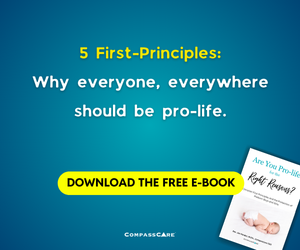It was only a matter of time. With more than half of abortions in the United State chemically induced, along comes a convenient “study” supposedly demonstrating that women can not only just use one of the two drugs to chemically abort, they can do so well past the 10 weeks of pregnancy and without the supervision of a health care provider, as recommended by the Food and Drug Administration (FDA).
And, oh by the way, they can “self-manage” their abortions, which is the #1 goal of the Abortion Industry.
Roni Caryn Rabin, writing for the rapidly pro-abortion New York Times, leads with this first paragraph:
An overwhelming majority of women were able to end unwanted pregnancies with abortion medications on their own and without additional medical procedures, even if they were well beyond the first trimester, according to a report published on Thursday.
The study, Rabin writes, “was based on the experiences of 264 women who were nine to 16 weeks pregnant in Argentina, Nigeria and an unnamed country in Southeast Asia where abortion is illegal. Almost half of the women took only one drug, misoprostol, instead of the standard two-drug regimen, mifepristone and misoprostol.
”They were nonetheless able to terminate the pregnancies, according to the study, published in the journal Obstetrics & Gynecology. All of the participants received information from an abortion support group.”
Forty-four percent used only misoprostol, Rabin writes. Why is that important? Misoprostol is “prescribed for many conditions and available in many countries without a prescription.”
Get the latest pro-life news and information on Twitter. Follow @LifeNewsHQ
The qualifiers begin after the first few laudatory, uncritical paragraphs. Almost one in four women sought “medical care” after their abortions, “most frequently to confirm that the termination was complete. A smaller percentage wanted to address concerns about bleeding, pain, fever or discharge.” Smaller percentage?
However, Rabin writes, “Women who were pregnant for 12 weeks or longer were significantly more likely to seek medical care after a medication abortion, compared with those who were nine to 11 weeks pregnant.”
But, not to worry.
Dr. Daniel Grossman is the director of ANSIRH (Advancing New Standards in Reproductive Health). He is an abortionist and former board member of NARAL Pro-Choice America and the National Abortion Federation. In a word Grossman is Abortion Industry’s go-to guy to validate every claim.
“This paper adds to previous research indicating that self-managed abortion with medications is safe and effective, including after 12 weeks of pregnancy,” said Grossman. “As clinic-based abortion care becomes less available in many parts of the country due to state-level bans, self-managed abortion will become more common, as we are already seeing.”
Why are studies such as this one—especially this one— so important to abortionists? “The new study, one of the first to report on self-managed medication abortions carried out after the first trimester of pregnancy, offers these women some reassurance, researchers said.”
Rabin casually mentions that “About 90 percent of the women in the study succeeded at ending pregnancies with self-managed medication abortions, without any additional intervention needed. Five percent had a procedure to complete the abortion, and 5 percent had an incomplete abortion.”
The story does not breakout the results by weeks, except to say “Only three participants self-managed abortions with gestations of 17 weeks and longer, and the study’s authors called for more research into medication abortion and later pregnancies.”
Finally, in reality complications associated with misoprostol are not rare as Dr. Randall K. O’Bannon, NRLC director of education and research, has documented over and over again. For example,
A 2015 study of emergency room visits by University of California, San Francisco researcher Ushma Upadhyay is one of those often cited as proof that the rate of serious complications is “less than 1%.” Indeed, in “Incidence of emergency department visits and complications after abortion,” from the January 2015 issue of Obstetrics & Gynecology, Upadhyay officially found that “The major complication rate was 0.23%,” less than a quarter of one percent.
But this depends on several questionable moves to finesse the data.
First, Upadhyay specifically limits what can be counted as a “serious” or “major” complication.
“Major complications were defined as serious unexpected adverse events requiring hospital admission, surgery, or blood transfusion,” the article asserts. “Minor complications were all other expected adverse events.”
While this sounds reasonable, consider the things included in Upadhyay’s “minor complications”: hemorrhage, infection, incomplete or “failed” abortion requiring “uterine aspiration” (i.e., surgical abortion). Even things like “uterine perforation” were classified as “minor.”
Second, with this knowledge, consider that when Upadhyay added in and counted both major and “minor” complications, the complication rate for chemical abortions was 5.19% – considerably higher than the “less than one percent” advertised.
LifeNews.com Note: Dave Andrusko is the editor of National Right to Life News and an author and editor of several books on abortion topics. He frequently writes Today’s News and Views — an online opinion column on pro-life issues.








